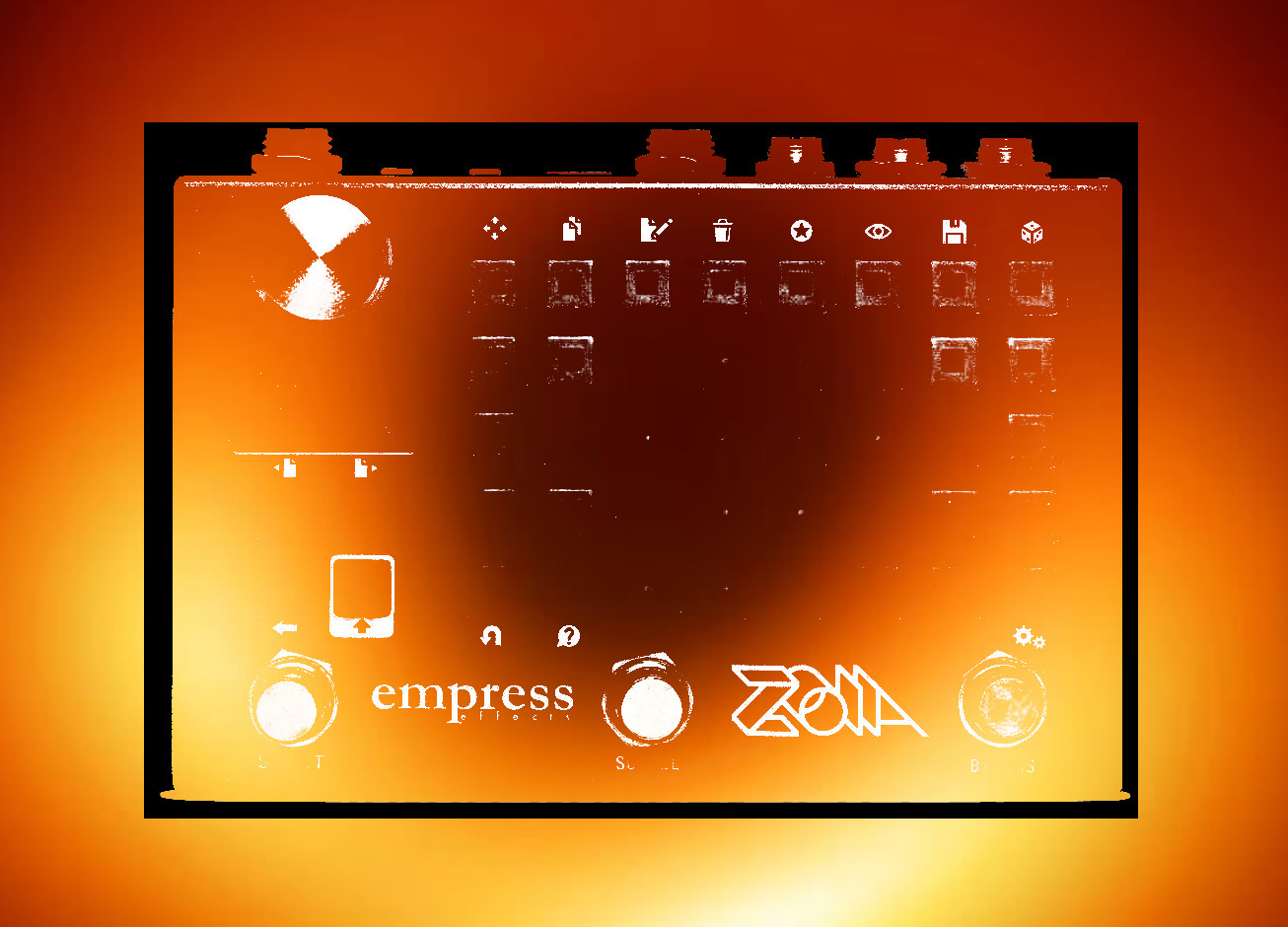Or bass synth or ukelele synth or bassoon synth, etc.
I was thinking a little about the Boss SY-1/300 and how they achieve synth sounds without pitch tracking. Now, I can’t begin to guess what goes into that, but it did make me wonder what guitar synth sounds I could achieve on ZOIA without resorting to oscillators and pitch-tracking and other areas of frustration.
Hence, fuzz synth — a guitar synth that uses (a lot of) filtering, some pitchshifters, a little fuzz and an AND bit modulation to create a pretty synth-y sound. It is a fairly aggressive sound, but it’s not a wild squall of sound; you could use this very melodically, I think.
Does it do polyphony? Sort of! Does it do polyphony well? Umm….
I find the onset detector glitchy as hell and this patch already had too much going on to support one, CPU-wise, so triggering the envelope involves letting the envelope reset (go to 0) before firing it again. With palm muting, you can get it to fire pretty consistently; if you don’t care for palm-muting, then you get an actually pretty nice legato effect as the envelope stays open over several notes.
The signal path is stereo for the dry signal path and mono for the effected signal path. The envelope follower derives from the left input.
Let’s talk controls!
Stompswitches do nada for this one.
Front page:
Frequency and resonance — the frequency and resonance of the main, tone-shaping filter. I often restrict limit the resonance available on a patch, because after you go above ~20 or so, you end up having gain issues. I didn’t do that here. If you push resonance too high… you will end up having gain issues!
Timbre — an interesting control. To the left (0) is a fatter, more full synth voice; to the right (1) the sound grows thinner but also more reedy; at various points between are mixes of the two. Not quite an approximation of going from a square wave to a sawtooth, but that was the inspiration; this uses a low-pass/high-pass filter combo deeper in the patch to achieve a fair amount of flexibility in the sound.
Sensitivity — controls the sensitivity of the gate, lower values will leave the gate open longer (more sustain but also more difficulty triggering the envelope)
Mix — wet/dry mix; I keep it at 100%, but people might appreciate the option to mix in a dry or otherwise effected signal
ADSR depth — a bidirectional control; this is governed/regulated by the filter frequency (envelope depth will scale as the frequency changes; consider the value a relative percentage of the filter’s sweep)
Attack, decay, etc. — envelope controls
LFO depth — also bidrectional, but this does not scale with filter frequency. That means as you adjust filter frequency, the LFO’s depth will remain the same; it also means you can dial in depths that exceed the range of the filter’s sweep.
LFO module — adjust the rate, change the shape (in the options menu), watch the light blink; in the middle of the module is a button called “Env to LFO dept” (depth–ran out of characters): turning this on will cause the shape of the envelope to determine the depth of the LFO as the envelope progresses
Pitchshifter 1, 2 — adjust the pitchshifters here; think of these as additional oscillators. Chords are possible with this patch, but you have to think strategically about the pitchshifter settings when you deploy them.
This is a fun one to fool around with, imo.
Revision 1.1 (8/31/19):
Minor revisions made to the signal path to improve the sound. Not a major overhaul or any function additions, but I think it sounds slightly better for the effort.
Sound clip:
I just messed around with various settings. Envelope up, envelope down, LFO, changing the timbre, changing the pitchshifters, etc. At the end, I play a couple of chords with the pitchshifters set to +1 and +2 octaves.


